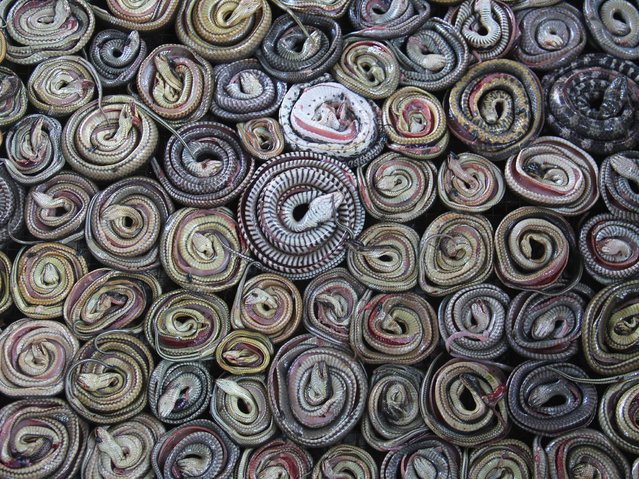
Snakes are collected and rolled before putting into the oven on March 2, 2014 in the village of Kertasura, Cirebon, Indonesia. At slaughter house snake skins measuring in the hundreds of metres, are sold to bag factories in the West and Central Java provinces on a monthly basis. (Photo by Nurcholis Anhari Lubis/Getty Images)
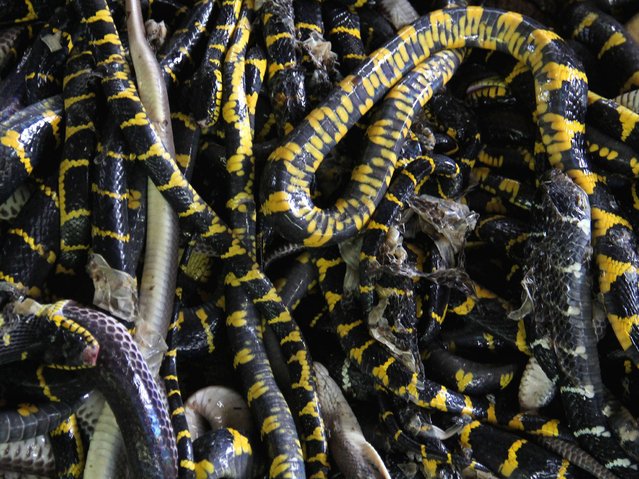
Killed snakes are taken to be skinned in the village of Kertasura, Cirebon. (Photo by Nurcholis Anhari Lubis/Getty Images)
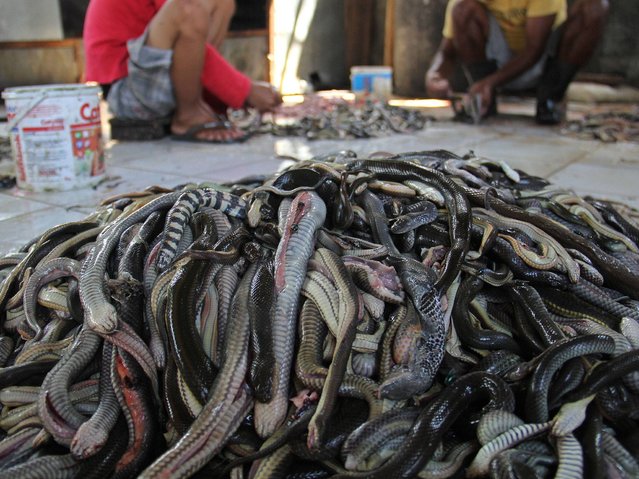
Workers prepare snake skins in the village of Kertasura, Cirebon. At slaughter house snake skins measuring in the hundreds of metres, are sold to bag factories in the West and Central Java provinces on a monthly basis. (Photo by Nurcholis Anhari Lubis/Getty Images)
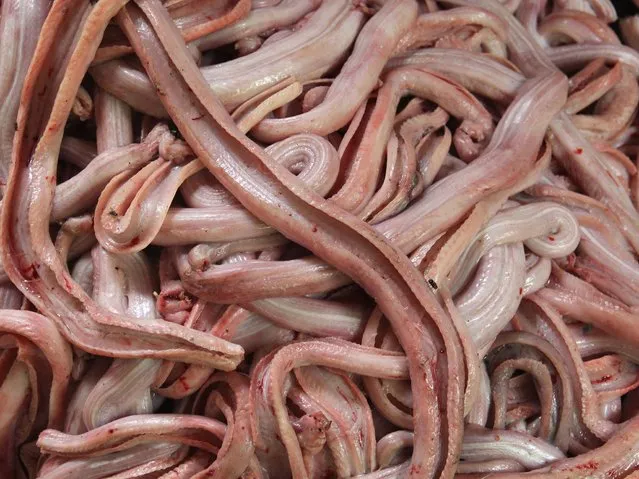
Snakes are gathered after being skinned in the village of Kertasura, Cirebon. Snake skins are then manufactured into bags, shoes, wallets and belts. (Photo by Nurcholis Anhari Lubis/Getty Images)
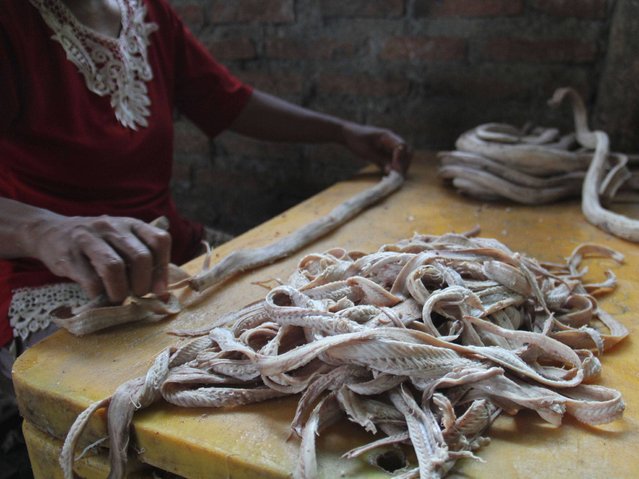
A worker cleans the captured snake skins in the village of Kertasura, Cirebon. (Photo by Nurcholis Anhari Lubis/Getty Images)
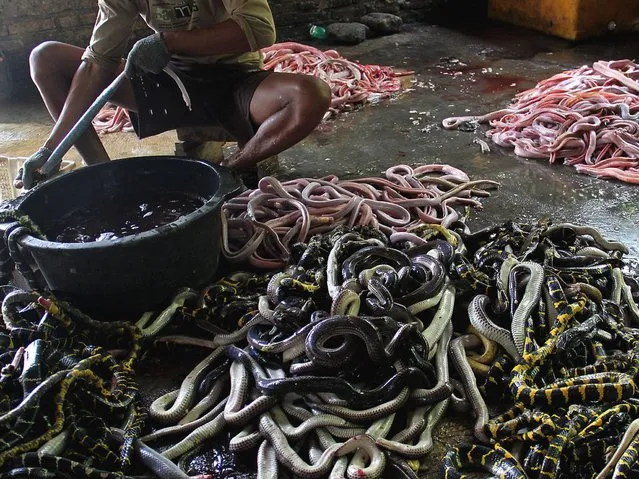
A worker cleans the captured snake skins in the village of Kertasura, Cirebon. (Photo by Nurcholis Anhari Lubis/Getty Images)

A worker smooth dries snake skins in the village of Kertasura, Cirebon. (Photo by Nurcholis Anhari Lubis/Getty Images)
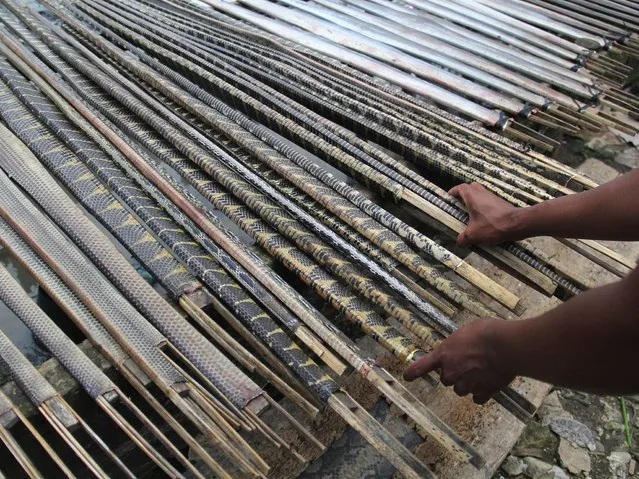
Dried snake skins are prepared in the village of Kertasura, Cirebon. When snake skins reach Western fashion houses their price can increase dramatically and sell for up to $4,000 USD. (Photo by Nurcholis Anhari Lubis/Getty Images)
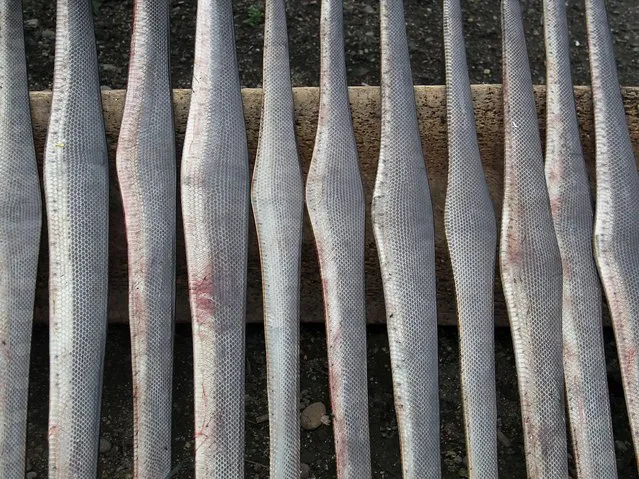
A worker suns snake skin in the village of Kertasura, Cirebon. The price of a bag made from snake skin costs between 150,000 rupiah ($15 USD) and 300,000 rupiah ($30 USD), depending on its size. (Photo by Nurcholis Anhari Lubis/Getty Images)
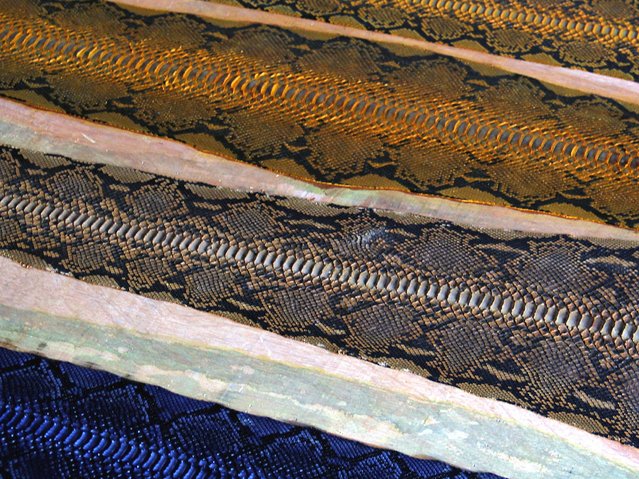
Snake skin which already passed the coloring process are ready to be sent to the factory. (Photo by Nurcholis Anhari Lubis/Getty Images)
05 Mar 2014 07:31:00,
post received
0 comments
